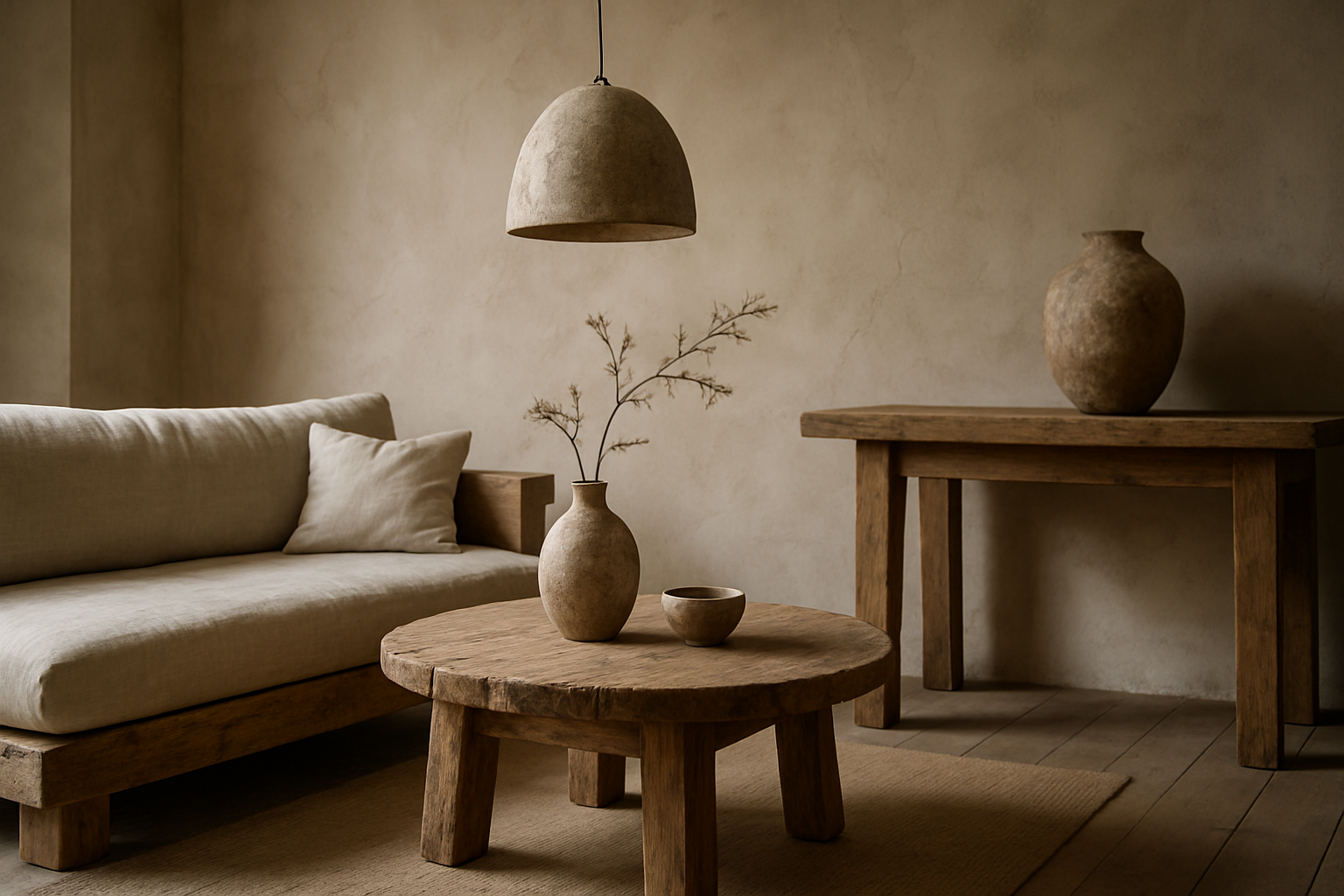Rustic Renaissance: Reviving Natural Materials in Modern Interiors
Imagine stepping into a home where the warmth of raw wood meets the coolness of polished concrete, where rough-hewn stone walls contrast with sleek metal fixtures. This isn't your grandparents' cabin in the woods – it's the cutting-edge of interior design, where rustic elements are being reimagined for contemporary spaces. Welcome to the Rustic Renaissance, a movement that's breathing new life into natural materials and traditional craftsmanship.

This revival can be traced back to the early 2000s, when the farm-to-table movement began to gain traction in the culinary world. As people became more interested in the origins of their food, this curiosity extended to other aspects of their lives, including their living spaces. Designers and homeowners alike started to seek out materials and furnishings with a story, valuing authenticity and craftsmanship over mass-produced perfection.
Natural Materials: The Stars of the Show
At the heart of the Rustic Renaissance is a celebration of natural materials in their most authentic forms. Wood, stone, leather, and metal take center stage, each bringing its unique character to the space.
Reclaimed wood, in particular, has become a prized material in this movement. Whether it’s barn wood repurposed as flooring or weathered beams salvaged from old factories, these pieces carry history in their grain. Designers are using these elements to add warmth and texture to otherwise sleek, modern interiors.
Stone, too, is making a comeback in unexpected ways. Instead of the polished marble countertops that dominated kitchens for years, we’re seeing rough-cut stone slabs used as statement pieces. Textured stone walls are replacing flat painted surfaces, adding depth and visual interest to living spaces.
Craftsmanship: A Return to Handmade
The Rustic Renaissance isn’t just about materials – it’s also about how those materials are worked. There’s a renewed appreciation for traditional craftsmanship and handmade items. This trend is partly a reaction to the ubiquity of mass-produced goods, and partly a desire for items with soul and story.
Artisanal techniques like blacksmithing, pottery, and weaving are being incorporated into modern interiors. Hand-forged metal light fixtures, hand-thrown ceramic vases, and hand-woven textiles add unique, tactile elements to spaces. These pieces not only bring beauty and functionality but also support local artisans and keep traditional skills alive.
Blending Old and New
What sets the Rustic Renaissance apart from previous rustic trends is its seamless integration with modern design. It’s not about recreating a log cabin in the suburbs – it’s about finding creative ways to incorporate rustic elements into contemporary spaces.
For example, a sleek, minimalist kitchen might feature a massive farmhouse sink carved from a single block of stone. Or a modern living room could be anchored by a coffee table made from a cross-section of an ancient tree. The key is in the contrast – the juxtaposition of rough and smooth, old and new, handmade and high-tech.
Sustainability: An Added Bonus
One of the most appealing aspects of the Rustic Renaissance is its inherent sustainability. By using reclaimed materials and supporting local artisans, this style naturally aligns with eco-friendly design principles.
Reclaimed wood, for instance, not only adds character but also reduces demand for new lumber. Choosing locally-sourced stone or handmade ceramics reduces transportation emissions compared to imported materials. And investing in well-made, timeless pieces means less frequent replacements and less waste.
Implementing Rustic Renaissance in Your Home
If you’re intrigued by the Rustic Renaissance, there are many ways to incorporate its principles into your own space. Start small with accessories – a hand-woven throw pillow or a reclaimed wood picture frame can add a touch of rustic charm without overwhelming your existing decor.
For a bigger impact, consider statement pieces like a live-edge wood dining table or a stone accent wall. Remember, the goal is to create contrast and interest, so don’t be afraid to mix these rustic elements with more modern pieces.
When shopping for rustic items, look for pieces with a story. Ask about the origin of the materials and the process of creation. Not only will this ensure you’re getting authentic pieces, but it will also give you interesting anecdotes to share with guests.
The Future of Rustic Design
As we look ahead, it’s clear that the Rustic Renaissance is more than just a passing trend. It represents a shift in how we think about our living spaces – a desire for authenticity, connection to nature, and appreciation of craftsmanship.
We can expect to see continued innovation in how natural materials are used in interior design. Advances in technology are allowing for new applications of traditional materials, like ultra-thin stone veneers or 3D-printed wood composites. At the same time, there’s likely to be an increased focus on local and regional design, with spaces reflecting the natural materials and craft traditions of their specific locations.
The Rustic Renaissance reminds us that in our increasingly digital world, there’s still immense value in the tactile, the handmade, and the natural. By bringing these elements into our homes, we create spaces that are not just visually appealing, but also grounding and deeply personal. It’s a design philosophy that looks to the past for inspiration while firmly facing the future – and that’s a renaissance worth embracing.





